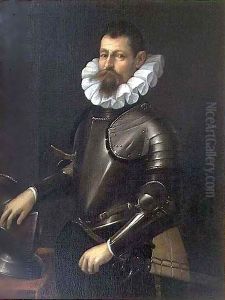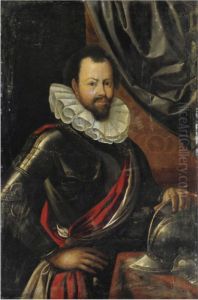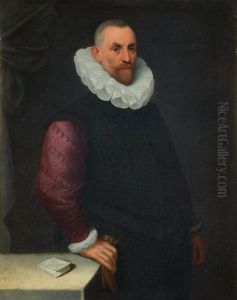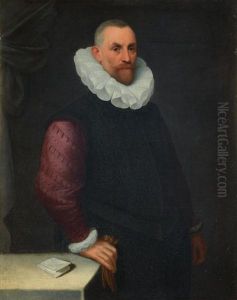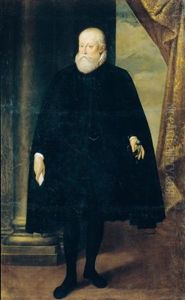Cesare Aretusi Paintings
Cesare Aretusi was an Italian painter born in Modena in 1549, during the Renaissance period, a time when art and culture were flourishing across Italy. His life and career were deeply embedded in the artistic traditions of the late Renaissance, contributing to the transition towards the Baroque era. Aretusi specialized in portraits, and his work was known for its detailed realism and depth of character, capturing not just the physical likeness of his subjects but also hinting at their inner life.
Aretusi's training and early influences remain somewhat obscure, but it is known that he was active in Parma and Naples, places that were vibrant centers of art in his time. In Parma, he would have been exposed to the works of Correggio and Parmigianino, artists celebrated for their mastery of color and delicate chiaroscuro. These influences are visible in Aretusi's portraits, which often feature soft lighting and a keen attention to the textures of fabrics and the flesh.
Throughout his career, Cesare Aretusi received commissions from prominent Italian families and ecclesiastical figures, which was a testament to his reputation and skill. His portraits were highly sought after for their elegance and for the way they conveyed the status and personality of the sitter. Despite the high regard for his portrait work, few of his pieces are widely known today, which might be attributed to the overshadowing fame of his contemporaries and the limited distribution of his works outside of Italy.
Aretusi's contribution to the art world extended beyond his own creations. He was part of the broader movement in Italian art towards greater naturalism and emotional depth, paving the way for the Baroque artists who would follow. His death in 1612 marked the end of an illustrious career, but his work continues to be studied for its contribution to the development of portrait painting in the late Renaissance and early Baroque periods.

